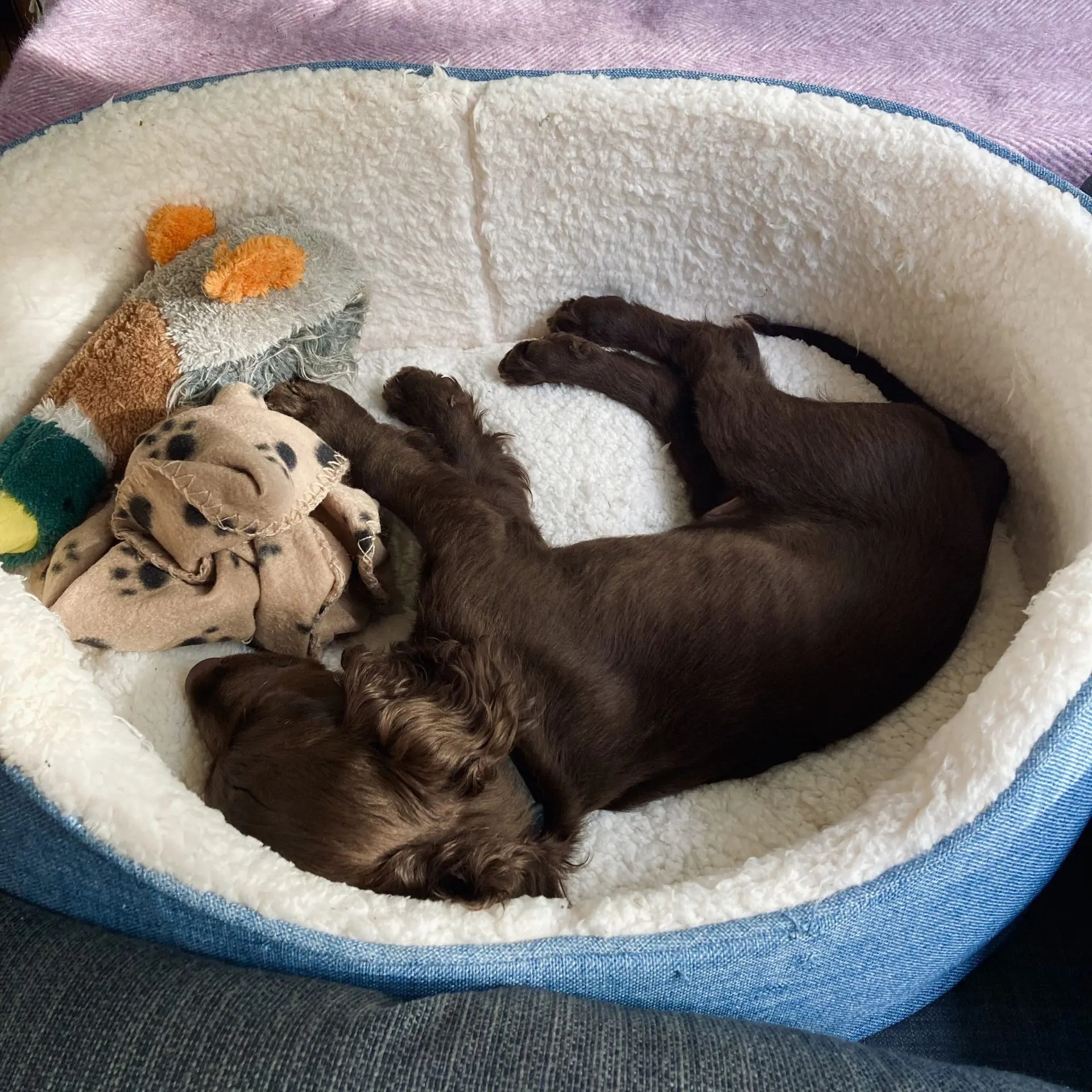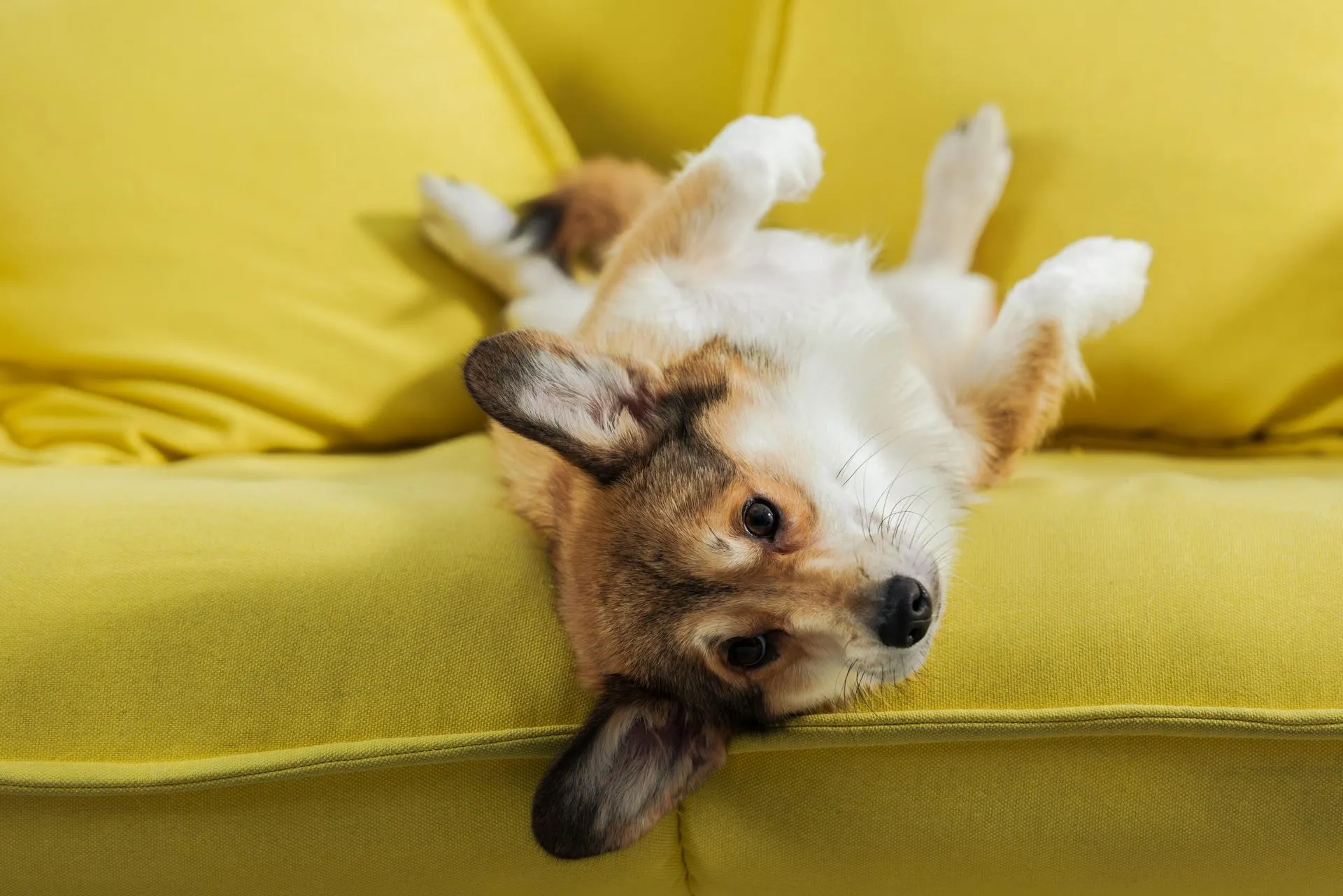Sharing your home with a beloved canine companion is a joy, and many dog owners appreciate their furry friends curling up on the sofa next to them. However, this privilege should ideally be by invitation only, as a dog that considers the couch its personal bed can present various challenges. This becomes especially problematic when your dog is wet and muddy, or when you have guests who prefer not to share their seating with a pet. This common dilemma leads many owners to wonder how to stop a puppy jumping up on the sofa and establish clear boundaries, ensuring both comfort and control in the home.
While tackling issues like excessive barking or stealing food might seem more straightforward, teaching your dog to stay off the couch requires a subtle yet consistent approach. It’s not about instilling a new routine from scratch, but rather modifying an established behavior that you may have inadvertently encouraged. Drawing on decades of positive, reward-based training principles, here are five effective steps to keep your dog off the sofa and encourage them to use their own designated resting spots.
Five Steps to Keep Your Dog Off the Sofa
1. Ensure Your Dog Has a Designated Bed
One of the most crucial steps in successfully teaching your dog to stay off the couch is providing them with appealing alternatives. Every indoor dog should have a comfortable, designated place in each room where they are allowed, a spot where they can settle, be calm, and relax. For instance, when you move to the lounge, bring their bed with you and encourage them to go to it using a clear command.
To reinforce this, two commands are particularly useful: “Leave,” followed by a hand direction, and pointing to their bed while saying “In.” The “Leave” command teaches your dog to disengage from something you don’t want them to have or do, while “In” directs them to their designated spot. Mastering these commands is foundational for redirecting your dog’s attention and preventing them from seeking comfort on the sofa.
2. Revisit Foundation Training If Commands Are Not Understood
If your dog consistently fails to respond to commands like “Leave” or “In,” it’s a clear sign that they haven’t fully grasped these instructions. In such cases, the solution is simple: you need to revisit their foundation training. This means going back to basics and practicing these commands in a controlled, distraction-free environment until your dog understands them perfectly.
A common routine involves holding your dog’s bed, asking them to sit, and then placing the bed in the chosen area. Call your dog to their bed (individually if you have multiple dogs), and immediately reward them with a piece of kibble or praise for their good behavior. This positive association ensures that when your dog sees their bed, regardless of its location, they view it as a good, positive place to be. This approach is beneficial even when traveling. A dog trained to accept any designated spot as “their bed” will happily settle on a shower mat in a hotel room, for example, offering them important space and comfort away from home. For more specific training scenarios that require precise responses, some owners might consider various methods and tools available, such as exploring how to train dog to come with shock collar as part of a broader training program, though positive reinforcement is generally recommended for teaching boundaries on furniture.
 A peaceful Cocker Spaniel puppy taking a nap inside a soft, comfortable dog basket.
A peaceful Cocker Spaniel puppy taking a nap inside a soft, comfortable dog basket.
This method isn’t just for your home; it’s incredibly advantageous when you’re away. For example, when visiting friends or family, bringing your dog’s bed and immediately directing them to it helps them settle quickly and remain calm, ensuring a pleasant experience for everyone.
3. Inconsistency Will Reinforce Disobedience
Allowing your dog onto the sofa intermittently will only make the situation harder. If they are sometimes allowed up and sometimes not, they will learn to expect it, rather than waiting for an invitation. This inconsistency can spill over into other areas of their life, leading to a general lack of respect for boundaries. For instance, a dog that jumps on the sofa without permission might also exhibit less disciplined behavior during walks, such as pulling on the leash. Addressing this broader issue of obedience can also be supported by resources like how to get your dog from pulling on the leash, highlighting the interconnectedness of training.
Dogs thrive on clear expectations and consistency. If one family member strictly enforces the “no couch” rule while another permits it, your dog will quickly learn to exploit this discrepancy. Establishing a united front and ensuring everyone in the household adheres to the same rules is paramount for effective training and fostering mutual respect and partnership.
4. Practice, Practice, Practice for Lasting Change
If you’ve previously allowed your dog onto the sofa and now wish to change this habit—perhaps for hygiene reasons, to enjoy a meal in peace, or when guests are over—be prepared for consistent effort. As with any behavioral modification, regular practice of the new routine is essential to achieve the desired results. Patience and persistence are your greatest allies here.
The ideal scenario involves your dog being on the sofa, you pointing to their bed, and giving the command: “Bertie, in!” (or your dog’s name). If your dog doesn’t immediately comply, it’s crucial to calmly guide them. This reiterates the importance of their name recognition and understanding that following your command leads to a positive outcome and reward. Reinforce their designated bed as a desirable place to be, creating a strong association between the command and the positive experience. For a direct guide on managing this specific issue, you can also consult articles like how to stop dog from jumping on sofa.
 A focused Labrador retriever lying calmly on its dog bed, observing a food reward placed on the floor nearby.
A focused Labrador retriever lying calmly on its dog bed, observing a food reward placed on the floor nearby.
5. Recognize When Your Dog Is Too Excitable for Training
Sometimes, dogs become overly excited, jumping in and out of their beds and running around. This indicates they are not yet in the right mindset or environment for this stage of training, especially if there are other people, food, or drink present. Trying to enforce “off the couch” commands when your dog is highly stimulated will likely be ineffective and frustrating for both of you.
The best way to restart this process is to go back to basics with their bed. When they are calmly sitting in it, place a food reward on the floor next to their bed. This gives them a clear reason to sit and watch the kibble, engaging their focus. Periodically, walk past their bed, lean down, and reward them with another piece of kibble. The reward’s visibility and predictable delivery reinforce the idea that staying in their bed leads to positive outcomes, teaching them to ignore distractions over time. After a week or so of consistent practice, your dog should happily go into and stay in their bed for extended periods, knowing a reward—whether praise, an ear scratch, or a treat—will always come their way.
Conclusion
Teaching your dog to stay off the couch is a process that requires patience, consistency, and clear communication. By providing a comfortable alternative bed, revisiting foundational commands, maintaining consistent rules across the household, and practicing regularly, you can effectively establish boundaries. Remember to recognize your dog’s emotional state and adjust training accordingly, always prioritizing positive reinforcement. With these strategies, you’ll not only achieve a well-behaved companion but also strengthen the bond of respect and understanding between you and your dog.
